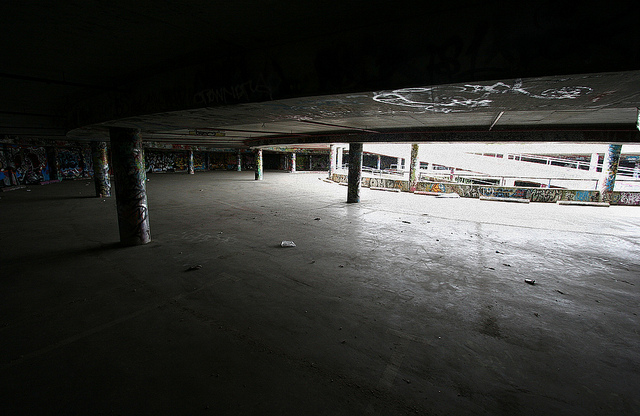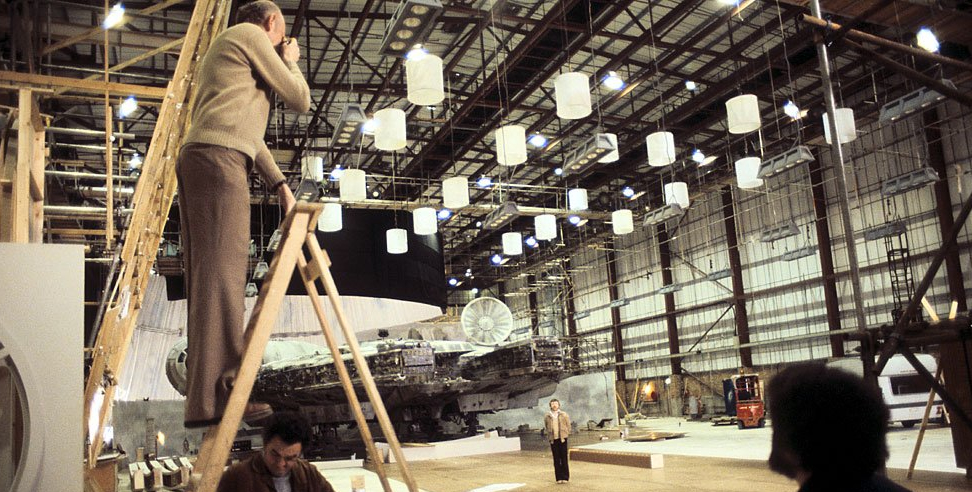Chris Sweetman has a new library out called “Interesting Interiors” and was kind enough to be interviewed by Samuel Justice for this article.
For those who don’t know you – could you give a quick overview of your career?
I was very lucky to have an early start in sound. My father, Brian Sweetman, is a 50 year film sound veteran and I was brought up going to field recording sessions and fooling around in projection rooms as a kid, so when I left school it felt natural to move into sound.
Initially, I worked with my Dad who was running his own sound business working in the Film & Television industry back in the late 80’s/early 90’s. We worked mainly on film and tape stock (as DAW’s weren’t invented!) such as 16mm, 35mm, 1/4″ and Optical, I loved the tactile aspect of the job, playing around with splicers, moviolas and steenbecks. Most of the work we did was recording sounds, film transfers and voiceovers. That’s when I really started to get interested in making sounds.
I got to work with lots of amazing people on some great projects. One of these great experiences was working with sound guys from a previous generation and seeing how they did things, it’s something that has stuck with me and heavily influenced how I approach the creative process.
I left the film industry in about 1997 after about 8 years. I felt that game technology was moving forward at such a pace that they’d need sound designers to work on games. As it was such a new industry, it was an incredibly exciting opportunity.
There weren’t many jobs for specialised sound designers in those days so it was a while before my first job in games at Gremlin Interactive in early 1998. I moved to Acclaim in 1999 and met some guys that would feature heavily in my future (Ben Minto, Steve Root) following that was Argonaut, Criterion, Splash Damage, Sounds Sweet’man and now Microsoft.
What have been your career highlights so far?
In film I think my biggest highlight was working with Jim Shields on “Goldeneye” and “The Saint”. Jim Shields was the man behind the soundtrack to Alien, along with Derrick Leather and Bill Rowe. They won the BAFTA for their efforts. Jim had a profound effect on how I approach sound creation and the use of sound. His instinct and mastery of sound was unparalleled. I was so lucky to have worked with him, albeit for a short while.
In games, firstly, it would be the team at Criterion during the “Black” and “Burnout Paradise” days, the team was amazing on Black and it was one of the most enjoyable periods of my career.
Everyone had a voice and we gelled together extremely well, it was a real pleasure. Recently I’ve been having a blast working with Epic Games on Fortnite with an awesomely talented Audio Director named Zak Belica. We’ve had so much fun coming up with sounds to populate this crazy world!
How (if at all) has your process and aesthetic changed from working on linear video to working on game audio?
To be honest it’s not really that different. I’ve been in games for over 15 years now, things have certainly changed more there than they have in film.
Apart from learning some new skills and thinking more about how you break sounds down into individual elements it’s very similar.
I’m still incredibly excited about the leaps and bounds we are continuing to make in our industry. It’s a industry that continues to evolve something I never get bored of!

What made interiors stand out to you as a first release?
Honestly, it wasn’t really a conscious decision, I had pooled together all the sounds I tend to fall upon time and time again as their unique sound just don’t exist anywhere else. It just so happened that most of them fell into the Interior Ambient category. I added the Interesting tagline to differentiate them from other interior ambient libraries, I didn’t want people to think they were just buzz tracks.
What was the thought process behind picking the recordings for the release?
I tend to have a large pool of sounds that I use often in my work. These are ones that I always use for elements or if I need that something different. This release is a selection of some of the best of these sounds. For me they have character, something I always look for in a sound, and as such I hope they will be as useful to other people as they have been to me!
Could you give a quick rundown of the different types of equipment used?
These recordings were all made during impromptu sessions, they were recorded on what would be considered portable recording equipment in the day that myself and my dad dragged around with us.
Nowadays, you find people using brands such as Zoom, Edirol or Sony. But back in the midst of time it was the slightly less portable Technics SV260 and a Sony Stereo Condenser, I think it was an early ECM (it’s been a while!). Previous to that we used to carry a Nagra 4S with spare batteries, 5 reels of 1/4″ tape and pair of Sennheisers. I consider myself quite lucky these days!
With a strong history recording with analogue equipment, what are your biggest likes and dislikes about digital recording?
I’ll be honest it’s far better in so many ways using digital equipment. There are a few things that I’d always use analogue equipment to record (as well as using digital).
Material such as guns and explosions sound so much better recorded on 1/4″ with the tape saturation and analogue distortion, but, I certainly don’t miss lugging around a Nagra with set of mics, spare batteries (massive ones, not AA’s!) and bags of 1/4″ tape.
We have so many options available to us these days which allows experimentation in lots of ways with far less effort than pre-digital. For example, ambiences recorded on 1/4″ sound terrible compared to digital and with the ability to record in 5.1 it’s a different world.
I’d say the only thing I really miss about the analogue days is the tactile nature of the work, lacing up 35mm on a mag machine or splicing 1/4″ tape together are all things I really miss. I still own a Nagra that I lace up every now and again just for old times sake!
It’s a great reminder that things weren’t always as easy as they are these days….

What recording equipment do you generally use nowadays?
I tend to use a DAP1 with a batch of different microphones, ranging from Sennheisers to Schoeps.
I’ve also got a Zoom that I have in my car. I’m not really a gear junkie, for me it’s always been about gathering interesting sounds.
What advice would you give to those on how to improve their field recording skills?
Don’t be afraid to experiment and always try to carry around something to record with. All the recordings in the library are unplanned and just happened to be spare of the moment. If it sounded interesting we recorded it!
Practice makes perfect – I’m always asking other sound recordists about techniques. Especially ones who have experience in what I want to record. For example, if I were recording guns, the first people I’d speak to would be Charles Maynes and Ben Minto. I’m also one of the slightly stranger guys who record without using headphones, which is something I inherited from my father. I tend to just point and shoot, part of the excitement is getting back to the suite and listening to what was recorded!
Chris Sweetman has a new library out called “Interesting Interiors” which you can find here.
[soundcloud url=”https://api.soundcloud.com/tracks/149522057″ params=”color=ff5500″ width=”100%” height=”166″ iframe=”true” /]
![75904_10152190950702456_1065120687_n[1]](https://designingsound.org/wp-content/uploads/2014/05/75904_10152190950702456_1065120687_n1.jpg)
I do wish Chris didnt mention me in his article….. I appreciate it, but I am afraid it will sound like I am pandering when I say that he is one of the most remarkable sound artists I have ever worked with…. Congrats on your release Chris and Samuel, and it made me very happy to be able to purchase a copy of it this morning!!!!!
Chris you are an inspiration to me!!!!!
Thanks so much for the kind words Charles !
I hope you like the sounds : )